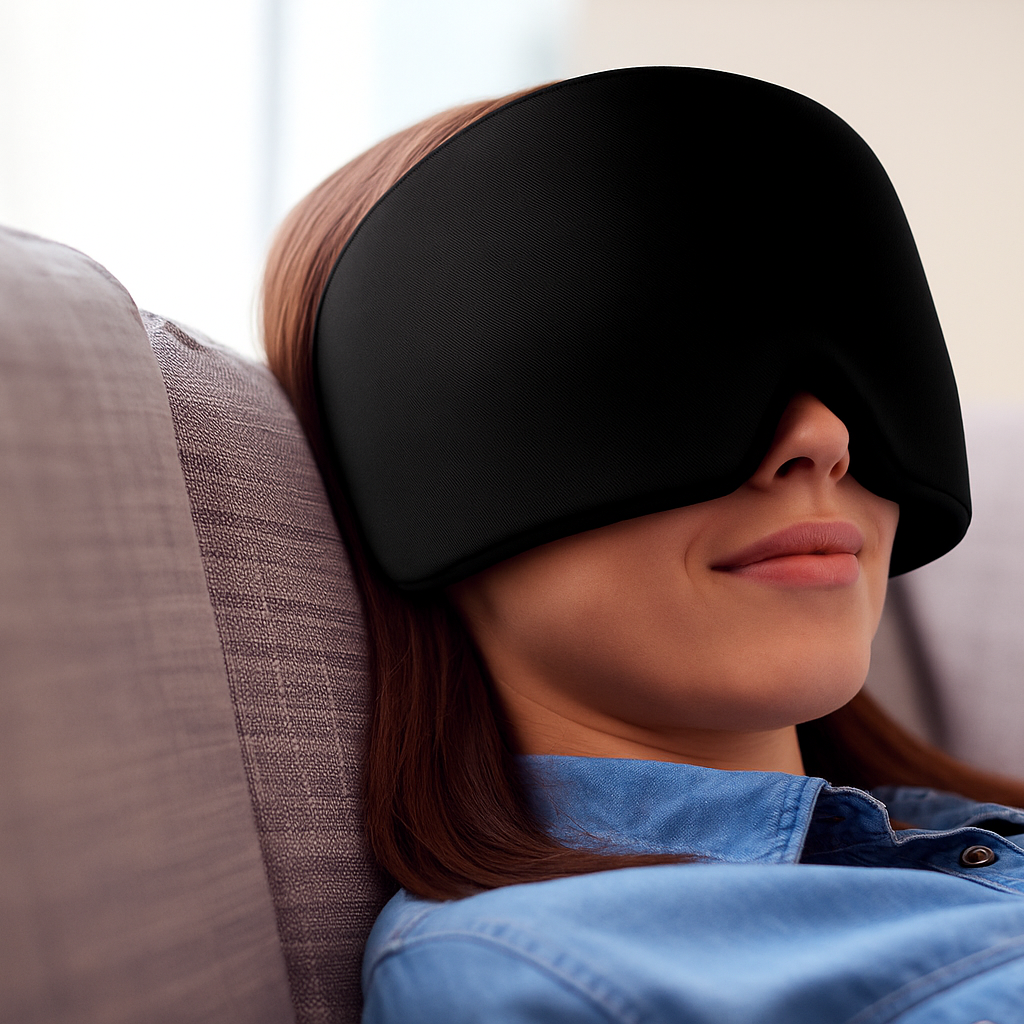
Heat or Cold for Headaches?
|
|
Time to read 2 min
|
|
Time to read 2 min
Gently place two fingers on your temples or base of skull.
Ask yourself: Does it feel “hot,” “tight,” or “both”?
Bold takeaway: Naming the feeling cuts decision time—and stress—in half.
Hot / throbbing → Cool first (e.g., chilled cap).
Tight / tense → Warm first (e.g., mild compress).
Unsure → 2-minute cool test; if discomfort lingers, pivot to warmth.
Bold takeaway: Start mild. It’s easier to warm up later than recover from over-heating.
Cooling session: 5–10 min, fridge-cold (≈40–50 °F / 4–10 °C), cloth barrier.
Warming session: 10–15 min, bath-warm (≈100–104 °F / 38–40 °C).
If relief < 50 % after first cycle, switch temperature once, shorter duration.
Rest 30 min before any repeat session.
Bold takeaway: One smart switch beats endless cycling—your skin and nerves need recovery time.
Rule of thumb: Start with the method that contrasts the dominant feeling (hot vs. tight). If unsure, begin with mild cooling—it's easier to dial temperature up later than recover from too much heat.
Both are safe and worth trying. The trick is matching the type of pain to the type of temperature therapy.
Cooling Caps & Packs
Fridge-cold (≈40–50 °F / 4–10 °C), never freezer-hard.
Limit single session to 10 minutes; always use a cloth barrier.
Warm Compress or Socks
Warm water, not boiling. Aim for bath-water feel.
Test on inner wrist first; if it feels “just nice,” it’s likely safe for head or neck.
Timing Cadence
One session per hour is plenty. More isn’t better; give tissues time to normalize.
Hydrate during breaks—temperature therapy pairs well with fluids.
Bold takeaway: Consistency and moderation beat extreme temperatures every time.
This post is educational only and not medical advice.
Information herein is for educational purposes and does not substitute professional medical guidance. Nocthera™ products offer non-drug comfort; they have not been evaluated by the FDA and are not intended to treat or cure disease. Consult your healthcare provider for persistent, severe, or new head pain. Use temperature aids only within safe ranges (≈40 °F – 108 °F / 4 °C – 42 °C).
Choosing heat or cold for headaches doesn’t have to be confusing. By labeling sensations, selecting the matching temperature, and respecting safe ranges, you create a reliable, non-drug wellness ritual.